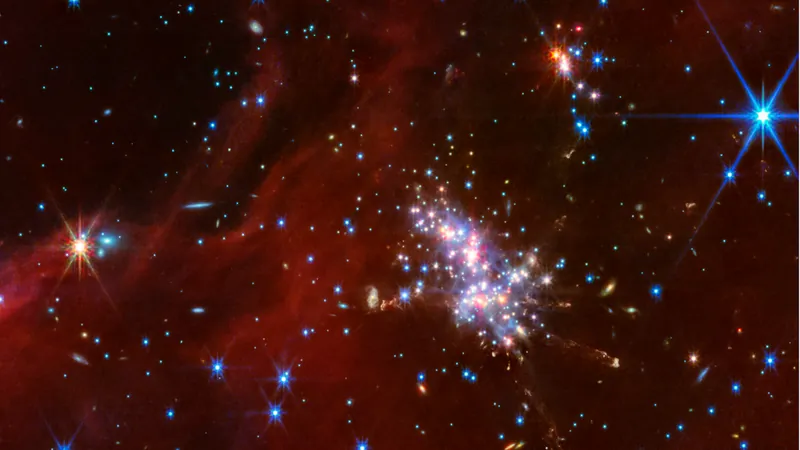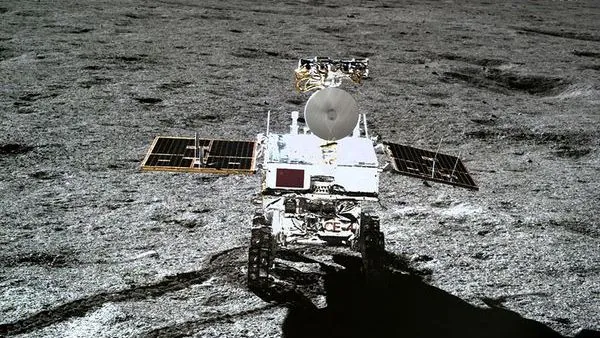
James Webb Telescope Unveils Stunning Newborn Stars at the Milky Way's Edge!
2024-09-16
The James Webb Space Telescope (JWST) has consistently pushed the boundaries of astronomical exploration since its launch on December 25, 2021. Having previously gazed into the depths of the universe to observe early galaxies from billions of years ago, JWST has now turned its powerful lenses back to our home galaxy, the Milky Way. A team of astronomers has focused the telescope on a region known as the "Extreme Outer Galaxy," situated about 58,000 light-years from the Milky Way's core.
To put this distance into perspective, our solar system is located only 26,000 light-years from the Galactic Center. Thus, this new investigation into the galaxy’s extreme outskirts is nothing short of remarkable. The JWST has captured a breathtaking image showcasing vibrant star clusters entering a phase of rapid star formation, known as a "starburst."
Natsuko Izumi, the study leader from Gifu University and the National Astronomical Observatory of Japan, emphasized the significance of these observations. "While we were aware of these star-forming regions in the past, we lacked the ability to thoroughly explore their properties. The JWST’s advanced data builds on earlier findings from various telescopes, granting us powerful and detailed images of these cosmic clouds."
The regions explored by the team are housed within extensive molecular clouds dubbed Digel Cloud 1 and Digel Cloud 2, which are teeming with dense gas and dust. Ranging across vast distances, these clouds have been imaged with unprecedented clarity thanks to the JWST's Near-Infrared Camera (NIRCam) and Mid-Infrared Instrument (MIRI).
Among the most exciting discoveries are extremely young protostars, which are in the initial phases of star formation. These stellar younglings have yet to accumulate sufficient material to ignite nuclear fusion, marking the distinction between a protostar and a fully formed star. Interestingly, these protostars demonstrate dynamic behavior, ejecting jets of superheated gas, known as "plasma," as if having their own "tantrums."
Izumi remarked on the unexpected activity in one of the clouds, stating, "In Digel Cloud 2, I was surprised by the level of active star formation and the striking jets emitted by these young stars."
What differentiates the Digel Clouds from other star-forming regions in our galaxy is their unique composition. Lacking heavier elements—often referred to as "metals" in astronomical terms—these clouds provide insights into conditions earlier in the universe's history before supernovae enriched the galaxy with heavier elements.
The researchers focused on four young star clusters within the Digel Clouds, designated 1A, 1B, 2N, and 2S. Notably, in cluster 2S, they witnessed a vibrant area of young stars releasing long jets of material—a phenomenon indicative of youthful stellar activity. Mike Ressler from NASA's Jet Propulsion Laboratory emphasized the extraordinary variability of the jets: "What astounded me in the JWST data was that there are multiple jets shooting out in countless directions from this cluster, resembling a firecracker display."
This groundbreaking research is just the starting point for the team. They plan to delve deeper into understanding the star formation process in the Extreme Outer Galaxy, examining how various environments affect the development of different star types. Future studies will also explore the mysterious circumstellar disks surrounding newborn stars, particularly why their lifespans appear shorter compared to those found in regions closer to Earth.
With these revelations, the JWST continues to redefine our understanding of the cosmos, and its observations promise to unravel more of the universe's intriguing mysteries in the times ahead!


 Brasil (PT)
Brasil (PT)
 Canada (EN)
Canada (EN)
 Chile (ES)
Chile (ES)
 España (ES)
España (ES)
 France (FR)
France (FR)
 Hong Kong (EN)
Hong Kong (EN)
 Italia (IT)
Italia (IT)
 日本 (JA)
日本 (JA)
 Magyarország (HU)
Magyarország (HU)
 Norge (NO)
Norge (NO)
 Polska (PL)
Polska (PL)
 Schweiz (DE)
Schweiz (DE)
 Singapore (EN)
Singapore (EN)
 Sverige (SV)
Sverige (SV)
 Suomi (FI)
Suomi (FI)
 Türkiye (TR)
Türkiye (TR)